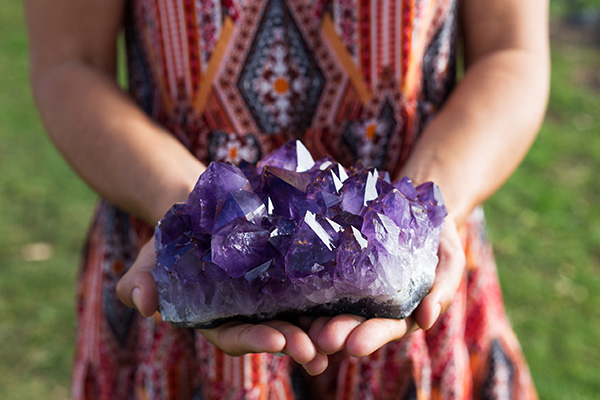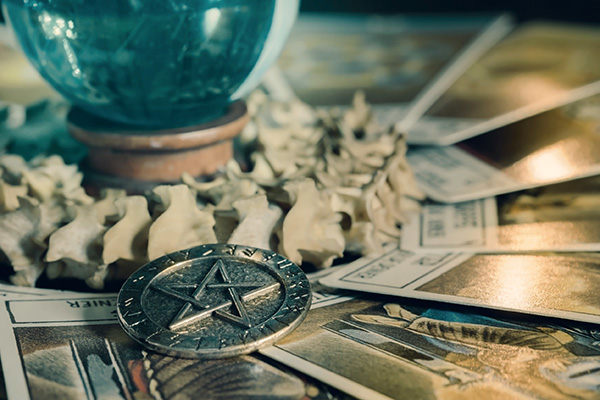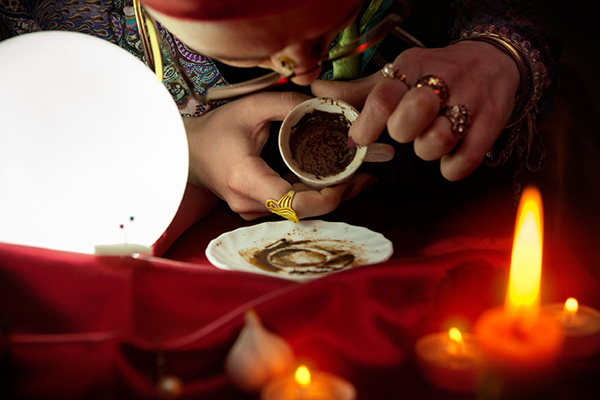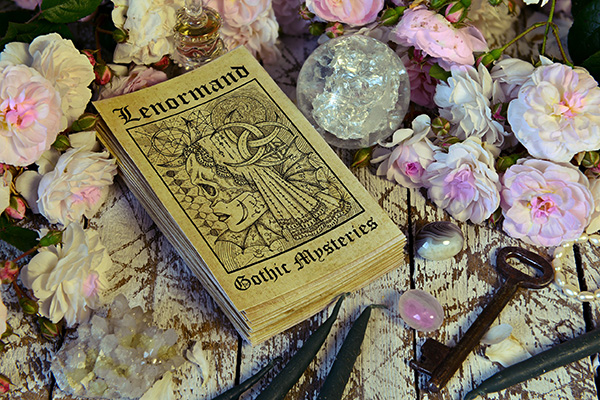esoteric
Accessing Your Own Akashic Record
 The ability to access the Akashic Records is traditionally considered a special gift that only a select few prophets or gurus are privy to. It is often mistakenly considered an esoteric practice that only the spiritually advanced or those of us with unique mystical abilities can perform.
The ability to access the Akashic Records is traditionally considered a special gift that only a select few prophets or gurus are privy to. It is often mistakenly considered an esoteric practice that only the spiritually advanced or those of us with unique mystical abilities can perform.
However, this outdated perception is rapidly changing. The modern spiritual landscape embraces the understanding that, with some dedication and practice, anyone can learn to access their own Akashic ‘file.’ This shift is rooted in the notion that these records are not exclusive, but universal.
The records are a karmic birthright, freely available to all who seek to access them with sincere intentions and an open mind, for the simple reason that having free access to one’s own karmic “data” is beneficial to your soul evolution.
The concept of the Akashic Records has fascinated mystics, spiritual seekers, and esoteric scholars for centuries. Rooted in various religious and spiritual traditions, it is described as a universal compendium of all events, thoughts, words, emotions, and intentions that have ever occurred in the past, present, or future.
This metaphysical “library” or “database” exists in the non-physical and underlies the universal field of consciousness and our entire existence. In Sanskrit, the term Akasha (आकाश) is derived from the root word kas, which means “to radiate,” “to shine,” or “to be visible.” The prefix “a” intensifies or negates the root meaning, giving “Akasha” various interpretations such as “ether,” “space,” or “sky.” In Hindu philosophy Akasha is considered one of the five elements that make up the physical world.
The Mystical Healing Properties Of Amethyst
 Amethyst, an enchanting purple variety of quartz crystal, is celebrated not only for its stunning beauty but also for its powerful metaphysical properties.
Amethyst, an enchanting purple variety of quartz crystal, is celebrated not only for its stunning beauty but also for its powerful metaphysical properties.
Traditionally held in high regard as a spiritual and esoteric tool, this semi-precious gemstone is revered for its potent energy and versatile healing properties.
The captivating purple crystal is associated with the third eye and crown chakras, making it a powerful aid in enhancing spiritual awareness and deepening meditative states. Its calming presence also helps to quiet the mind, promoting a sense of inner peace and emotional balance, which is essential for spiritual growth and clarity.
Amethyst is also known for its protective qualities, shielding the user from negative energies and psychic attacks while fostering a connection to higher consciousness and universal wisdom. Whether used in meditation, healing rituals, or simply carried as a talisman, the amethyst serves as a trusted companion on the journey of self-discovery and spiritual awakening.
As a psychic practitioner, I’ve always felt a deep, almost magnetic affinity for amethyst in both my personal spiritual practice and my professional psychic work. This beautiful violet crystal has a calming energy that enhances my psychic awareness and helps me achieve a sense of inner serenity for connecting with the spiritual realm.
When I hold Amethyst, I feel a heightened sense of clarity and insight, as if the veil between the physical and spiritual worlds is gently lifted. Its calming energy helps me stay centered during readings, allowing me to channel messages with greater precision and compassion.
The True Spiritual Meaning Of The Pentagram
 Perhaps no other spiritual or religious icon is as misunderstood as the pentagram, or pentacle. The true symbolism of the pentagram, a five-pointed star often surrounded by a circle, is commonly misrepresented.
Perhaps no other spiritual or religious icon is as misunderstood as the pentagram, or pentacle. The true symbolism of the pentagram, a five-pointed star often surrounded by a circle, is commonly misrepresented.
Contrary to popular misconceptions that associate it with darkness, evil, or Satanism, the pentagram has multiple meanings within various spiritual and religious traditions, most notably within Paganism and modern Wicca.
The pentagram has been a spiritual symbol of significance for millennia, long before its association with modern religious movements.
Historically, it has been used by cultures around the world, often to represent celestial bodies, principles of harmony, or mystical concepts. Its use first appeared in ancient Greece and Mesopotamia around the 1st millennium BC.
It is not widely known that there are significant historical connections between the pentagram and Christianity. Prior to the widespread use of the cross, the pentagram was a popular symbol to adorn the jewelry and amulets of early Christians, often alongside an “X” or a phoenix. This symbol was associated with the five wounds of Christ and also represented the concept of Alpha and Omega united, as the star could be drawn in one continuous movement of the pen.
In contemporary contexts, particularly within Wicca and related neo-pagan belief systems, the pentacle has positive connotations. It’s seen as a symbol of protection, spirituality, and the interconnectedness of the elements. Each point of the star represents an aspect of balance, holistic existence, conscious living, and the cyclical nature of life.
The Vibrational Alchemy Of Crystal-Infused Water
 I love using crystal water as part of my spiritual practice. Crystal-infused water is an alchemical elixir for harmonizing the body, mind, and spirit.
I love using crystal water as part of my spiritual practice. Crystal-infused water is an alchemical elixir for harmonizing the body, mind, and spirit.
Using the vibrational properties of crystals, this practice involves infusing water with the subtle energies emitted by carefully selected crystals and gemstones. Drinking crystal water is a powerful healing tool and wonderful for maintaining holistic balance and inner harmony.
I like to drink crystal water only once a week. I do not want to interfere with the body’s energetics every day. This is also a great way to get more water into your body and hydrate.
The use of crystals for healing and spiritual purposes dates back thousands of years, originating in the ancient civilizations, such as Egypt, Greece and China. These cultures believed in the energetic properties of crystals and used them for various purposes, including healing, protection, and spiritual connection.
While there is limited historical documentation that specifically mentions crystal-infused water in ancient traditions, it is evident that the ancients held a deep reverence for both crystals and water in their spiritual, healing, and ceremonial practices. Over time, as the awareness of the metaphysical properties of crystals evolved in modern times, the practice of immersing crystals in water for drinking emerged.
The Mystical Tradition Of Reading Coffee Grounds
 Traditional Turkish coffee is unique in its preparation. Prepared without the addition of milk, cream, and other additives, it focuses on the pure, robust flavors of the coffee.
Traditional Turkish coffee is unique in its preparation. Prepared without the addition of milk, cream, and other additives, it focuses on the pure, robust flavors of the coffee.
The art of brewing Turkish coffee is a meticulous process using a special coffee pot called a cezve or ibrik, which produces coffee with a strong flavor and thick, frothy texture. The grounds remain in the cup when it is served, contributing to the distinctive bitter taste that is a hallmark of this revered beverage.
In addition to its strong taste and aroma, Turkish coffee has a mystical appeal and a long history as a divination tool. The use of Turkish coffee grounds for divination, known as tasseography or kafemandeia, is a traditional practice in many cultures, including Turkish, Arabic and Greek.
In other cultures, tasseography is mostly practiced with tea leaves or wine sediments, but in Istanbul, coffee grounds became the preferred medium for this mystical art.
Steeped in history, the practice can be traced back to the Ottoman Empire, when coffee divination became popular in the 16th century in the harem of Sultan Suleiman the Magnificent, located in the Topkapi Palace in Istanbul, Turkey. This divination ritual was originally a way for the women of the harem to share news, gossip, and insights. At the time, women were banned from public coffeehouses, so fortunetellers, commonly known as “falci,” were allowed into the harem to read for the sultan’s wives. The term “fal” means “omen” or “fortune.”

